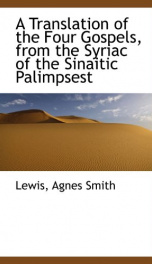through cyprus

Purchase of this book includes free trial access to www.million-books.com where you can read more than a million books for free. This is an OCR edition with typos. Excerpt from book: CHAPTER III. THE SIGHTS OF CAIRO. The Boulak MuseumMummy of Rameses II.The Tomb of the CaliphsThe Great PyramidIts ConstructionView from the TopSpurious CoinsThe SphinxDescriptionThe Mosque El AzharConversations with 'UlemasThe KuranThe Great Hall or UniversityMoslem Students. We bad examined the sights of Cairo well on our former visit, so all we cared to do was to refresh our memories by an occasional peep at some of them. We always took a drive in the afternoons either across the Nile to a spot where some of our countrymen were generally engaged in the spirited game of polo, or to the gardens of one of the Khedive's palaces. Here the most splendid Paris furniture is eclipsed by wardrobes and cabinets from the workshop of Parvis, the artist who has brought Italian taste to the work of reproducing the old Arabic designs. Twice we visited the Boulak museum, a place whose treasures are unique and extraordinary. It is no light thing to gaze on the mummy of Rameses II., whose features have become so familiar to us from numerous colossal statues, and whom Egyptologists identify with the Pharaoh of Exodus. One of his obelisks stands in the Place de la Concorde, of Paris, and he is, in truth, the most prominent figure of ancient Egyptian history. Yet how cold would our interest in him be were it not for the fact that his daughter drew Moses out of the river? The mummy which lies near him is probably hers. About that of Sethi, his father, there can be no doubt, for every royal mummy-case bore the cartouche of its occupant. Few there are who would not envy the feelings of Brugsch Pasha when he stepped into the subterranean chamber at Dayr el Bahari, and, though half swooning at the puff of air which had been stagnant for three thousand years, succeeded in readi...
Info about the book
Author:
Series:
Unknown
ISBN:
1400034744
Rating:
4/5 (2)Your rating:
0/5
Languge:
English
Users who have this book
Users who want this book
What readers are saying
What do you think? Write your own comment on this book!
write a commentGenre
if you like through cyprus try:
Do you want to exchange books? It’s EASY!
Get registered and find other users who want to give their favourite books to good hands!


